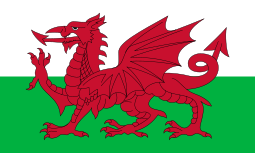Frequently Asked Questions
Here you'll find some questions we get asked the most about the Charity Digital Code of Practice.
The Code should be used as part of how charities benchmark their progress in digital and to inform key decisions in this area.
We have used ‘must’ and ‘should’ to indicate what we see as the minimum standard of good practice and ‘could’ to indicate enhanced best practice.
We hope that organisations will use it regularly. As an example, you might make digital a standing item at board and executive team meetings, whether separately or part of other points on the agenda, and if appropriate for their size of organisation.
There are lots of inspiring stories from other charities that are using the Code, with some great tips for how to put it into practice.
What do we mean by digital?
For the purposes of the Code, we are using the Co-op’s definition of digital which is:
“Applying the culture, practices, processes & technologies of the Internet era to respond to people’s raised expectations”.
This definition shows how digital has evolved beyond channels (e.g. social media or websites) to a mindset, reflecting how it is forming people’s beliefs, attitudes and behaviours.
If your charity is small, or if you are new to digital, a good starting point here is to see it as a set of tools to help you be even more effective and increase impact, and to learn from how beneficiaries and other supporters are using these channels. Digital can help charities to not only reach more people but also to free up time and resources to focus on human intervention where it is needed most.
We realise that the Code is big and ambitious, reflecting how the charity sector needs to keep pace with how digital is changing the lives of the people it helps.
There are plenty of resources out there to help you get started, from a quick summary of the Code in 3 Post Its to a handy summary of the Code from Trillium.
You can even start just with one principle, whichever feels most important to your charity right now. Get a few colleagues together and discuss how your charity stacks up against the best practice. What are you doing well and what could you develop?
Here’s a quick introduction to the Code e-learning module which will take you through what the Code is and how to get started with it.
If you'd like help putting the 7 principles of the Code into practice at your charity, you can arrange a free call through Digital Candle, a service to match charities with volunteer digital experts.
World Vision UK are one of the Code’s official champions and they’ve put together a tool to help you self assess how your charity stacks up against the Code. Find out how you compare here.
We’ve put together some resources to help you have that conversation with your CEO about digital. Here are some handy guides to help you support senior leaders in your charity.
- Superhighways’s digital leadership conversation starters
- A CEO’s guide to the Code
- 7 ways to get your CEO excited about the Code
We’re proud to say that there are some amazing charities already using the Code. Find out more in our section on Stories.
If you’ve got a question we’d love to hear from you. Please email charitydigitalcode@zoeamar.com.
The Code should be read in conjunction with other codes and best practice guides, including the following:
- The Charity Governance Code
- The section on digital media in the Fundraising Code of Practice
- Cyber Essentials
- The Charity Commission’s digital guidelines for trustees
- CAST’s digital service design standards
- Voluntary Sector Digital Maturity Matrix
- Principles for Digital Development (for NGOs).
We have also assumed familiarity with the charity’s strategy, vision and mission.
We’ve assumed that charities will be complying with any legal obligations related to their use of digital, such as data protection legislation and the GDPR.


